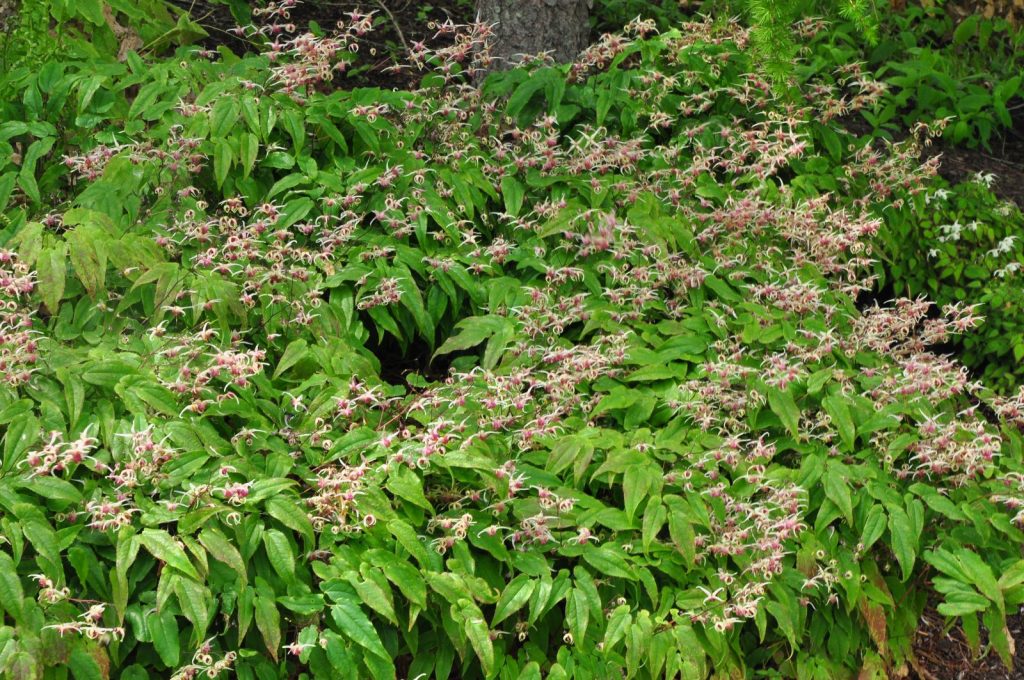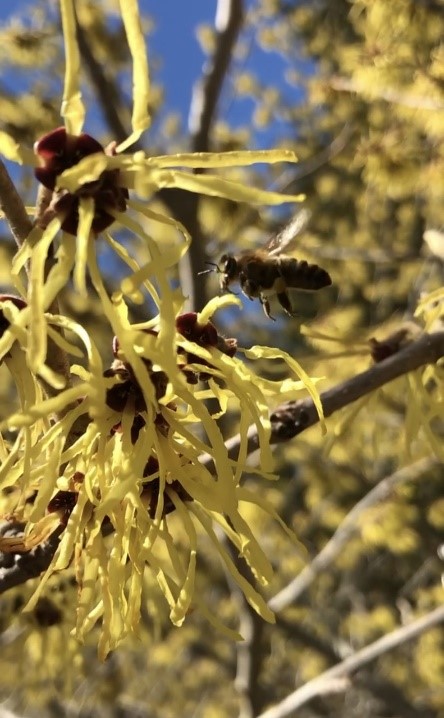Given the past few years, resiliency is a term we’ve become familiar with and concerned about cultivating. But what does it mean to apply the term to our gardening and landscaping endeavors? As garden- and nature-lovers, we’re already aware of the effects of a changing climate. And just as we want to encourage resiliency in our bodies and minds, we also want to cultivate it in our landscapes, embracing all components contributing to the balance of life.
Resilient Landscaping in Your Own Backyard
“Resiliency is about creating landscapes better able to withstand the constant flux of the climate,” says CMBG Director of Horticulture, Andy Brand. “We want to put in plants that can deal with changes while functioning ecologically and sustaining biodiversity. In other words,” he says, “plants that can thrive and support a lot of critters, including us.”
If the critters—wildlife—are doing well, then we’ll do well. Just as humans build up resiliency to guard against the effects of stress, plants do too. But not just any plants. “Native plants,” says Andy. “They’ve been evolving and adapting for years, and our native wildlife has been challenged to adapt along with them.”
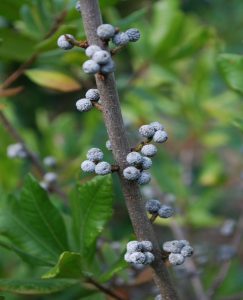
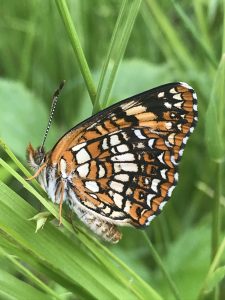
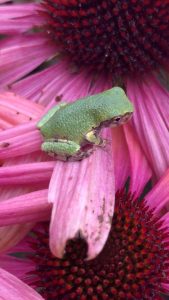
Heather McCargo, Founder of Wild Seed Project, agrees. “Our natives have gone through climate change before, migrating vast distances north and south. The difference now is that obstacles are in the way of that migration in the form of human development, which isolates wildlands, and of course the change is accelerated. Resilient landscapes are about planting the native plant in the right spot, i.e., match the site conditions, and if we do that, they’ll thrive without a lot of the fuss that we’ve come to expect from gardening.”
Think of it like a healthy immune system, says Trevor Smith, landscape contractor, designer, and Design and Education Manager at Weston Nurseries, a landscape design company specializing in native plant design, living walls, green roofs, rain harvesting, permeable pavements, and urban farming. “That healthy immune system starts in the soil,” he says. “The soil is alive, supporting a wealth of diversity.” That diversity equals strength and health. Healthy soil has, in Trevor’s words, healthy hydrology. “That means the rain is able to permeate the soil and percolate down through the layers, carrying nutrients past the A horizon, the first layer of soil.”
Available nutrients mean diverse vegetation can grow, too. “This plant diversity is directly connected to the soil and the water. When the former are healthy, the plants are able to play their part,” Trevor adds, “and healthy and abundant plants create healthy animals, including people—diversity above the soil keeps the plants and itself in balance.”
By now you might have noticed a theme here—healthy soils and a diversity of plant life equal plenty of wildlife. In essence, resilient landscapes seek to echo their natural counterparts. “Healthy soils are found in nature where human disturbance is minimal,” says Lisa Cowan, Principal of Studioverde, a leading nature-based Sustainable Sites (SITES) consulting and landscape architecture practice. “To preserve and restore healthy soils, we should minimize soil disturbance and, if necessary, restore the reference soil profile for your locality and plant community. If needed, use organic materials that are renewable within a 50-year cycle (a Sustainable Sites recommendation)—that means no peat moss!” Lisa advises. “And implement responsible practices for invasive plant control.”
Let’s pause for a moment here. Perhaps you’re thinking, well, if diversity is good, shouldn’t we encourage all kinds of plants to thrive? Yes and no. “Essentially,” says Andy, “a huge step in creating resilient, or ecological landscapes, is learning what shouldn’t be there. What we term ‘invasive plants’ tend to take over and spread aggressively, pushing out our native flora,” he explains.
“Plants can adapt, yes,” adds Gardens Adult Education Program Manager, Irene Barber, “but that isn’t as easy as moving into a new home. When introduced to a new area, plants can become invasive or offer less support to the ecology around them. They may have yummy nectar,” she adds, “but is it as abundant or filled with the nutrients the local fauna require? It’s like building a convenience store filled with chips, cookies, and pizza, rather than a produce store filled with fruits and vegetables. Who provides the better diet?”
So how do you know what shouldn’t be there? “Get a local guidebook,” Andy advises, “learn what the native plants in your area are, talk to garden clubs, and start with places like the Wild Seed Project. You don’t have to create a clean slate to begin, just do what you can.”
Also think about the natives you’d like to introduce. “Natives are beautiful, just adding them to landscapes makes a big difference in supporting wildlife,” says Heather. “Every native is a pollinator plant; they sequester carbon, produce fruit, and reproduce. Gardeners who want something new, instead of seeking out the latest cultivar, can plant native plants. They will be happy and attract cool insects and birds—believe me, the feedback is quick.”
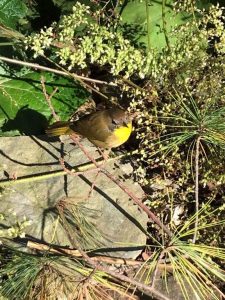
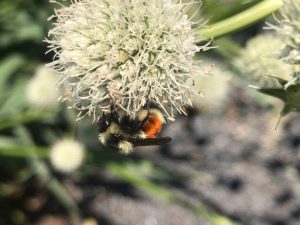
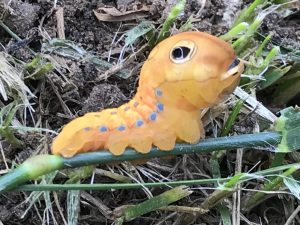
And you don’t have to limit yourself by incorporating natives exclusively. You might already have some plants that, while not native, are hardy and non-invasive, like daylilies. “Natives play a bigger role in attracting and maintaining biodiversity, but lots of non-invasive, non-natives can also support biodiversity,” says Andy.
If you want to get started, our experts have a few tips. “Sweet fern and bayberry are great choices,” says Andy. “They fix their own nitrogen, support wildlife, and, as low-maintenance plants, don’t require a lot of water or fertilizer. Bush honeysuckle (Diervilla lonicera, native) can be planted in hot, brutal, dry sites, too. We’ve planted it in our parking areas for that very reason. You can establish them and then essentially forget about them; they spread slowly and deal well with extremes while also preventing erosion. Basically,” he adds, “look for plants that serve many purposes and require little in the way of human interaction.” Super-tough plants like asters and goldenrods are great choices and also support wildlife. “After all, look where they’re growing—in cities, under harsh conditions, and they do fine.”
Some of Heather’s favorites are woody plants like native oaks, beech plum, pagoda dogwood, and viburnums. “Woody plants provide year-round habitat and have more leaves for photosynthesis, sequestering carbon and supporting lots of nature and wildlife,” she says, adding, “Put the right tree in right spot, and plant young.” Younger trees mean healthier root systems that have spent less time in nursery, being coddled. “They also grow faster than big plants,” says Heather. “Beech plum is a wonderful option and can be grown shrubby or as a small tree. It produces edible fruit, and early flowering supports butterflies and moths. I planted some in a narrow bed bordering my driveway, a hot and sunny spot, and I am rewarded every spring with beautiful flowers covered with pollinating insects and later with abundant fruit.” But for Heather, oaks top the biodiversity charts. “They also need to be planted young,” she advises, “but the best thing about oaks is that they’re the perfect tree to propagate yourself—just pick up an acorn.”
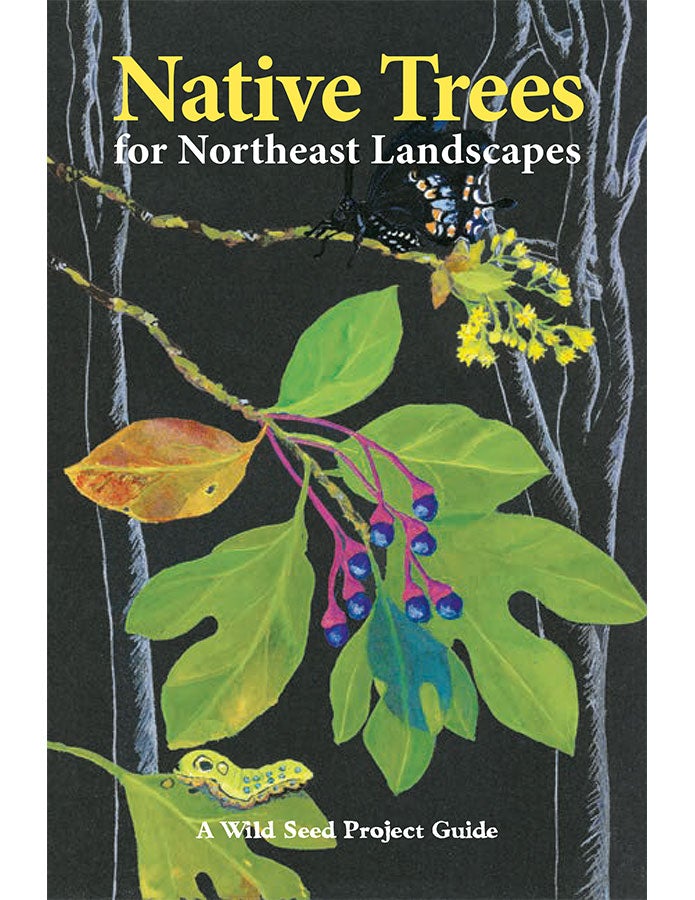
Websites are a valuable resource, too, if you know where to look. “Landscapes for Life is an excellent reference that covers the building blocks of landscapes and a great place to begin,” advises Lisa. Heather’s organization, Wild Seed Project, also has a library of very helpful blog posts.
Bottom line? “Individuals can have an impact—how we treat the land out our back door makes a difference for the whole planet,” Heather concludes. “People are finally listening, which is great, because we need to act now. Native plants, organic practices, and insects are all intertwined.”
“We can mitigate our own impact and improve quality of life for ourselves, our families, and our communities by amplifying the importance of landscapes and nature to help us make a difference,” says Lisa. “As ecologically-based landscape practitioners, we can promote responsible local food production, talk about the importance of natural outdoor spaces during a pandemic, and educate our clients.”
Other resources? Coming to the Gardens of course! “I don’t say this lightly,” Lisa adds, “but I have a tremendous respect for the work being done by CMBG to provide a place for Mainers and the global community to enjoy the beauty of designed and natural landscapes. Also for the groundbreaking, ecologically-based educational programming for the public, landscape designers, contractors, and land managers. It is a pleasure to be part of the Gardens’ educational programming.”
“By creating resilient landscapes we, as stewards of the land, reap the greatest benefits of all,” Trevor says. “We are healthier because of clean air, water, and reduced noise. We have reduced stress levels when our biophilic connections are strong and we, too, are in balance with the greater system. Best of all, we have the capacity to appreciate that system and all its beauty.”
“And remember,” Andy concludes, “to make a difference, you don’t have to do everything at once. Begin, and just keep going.”
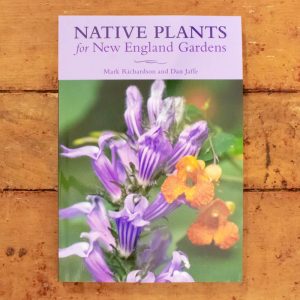
Helpful guides like this one can be found in Gardenshop!
We at CMBG are incredibly grateful to have these experts, environmental stewards, and teachers as part of our network and ecologically-driven educational efforts. Even if you don’t take a class with us (though, of course, we encourage you to do so!), you’ll learn and absorb so much, just by visiting.
To see the first class in our Resilient Landscape series, coming February 7, head over to our programming page.
